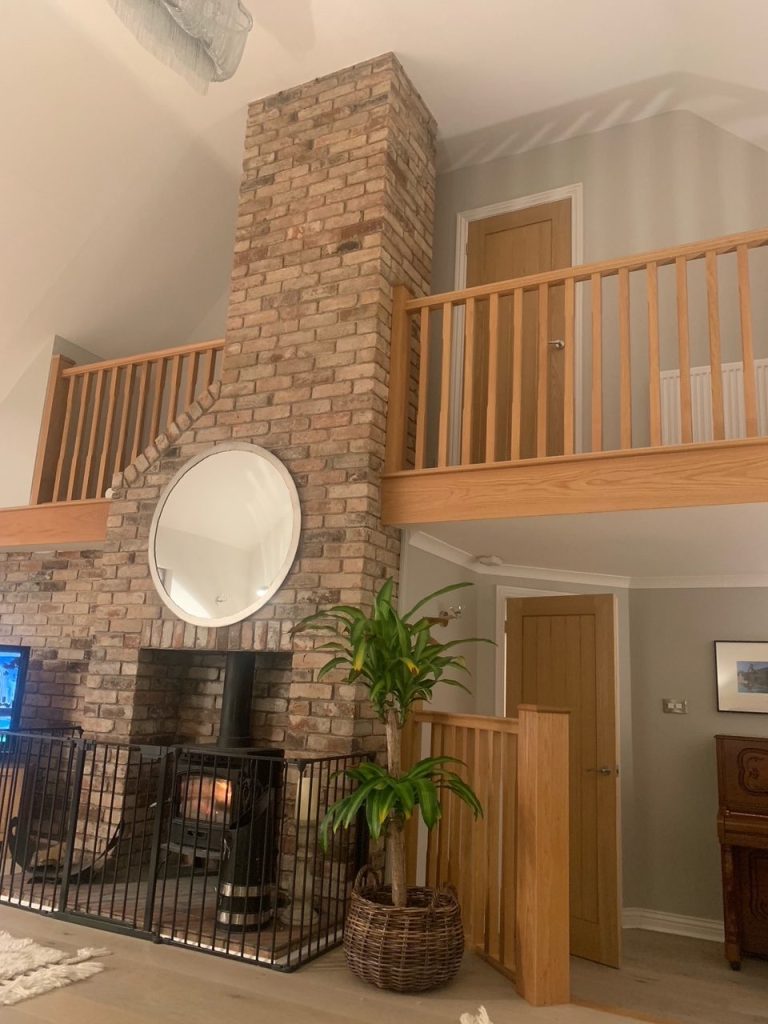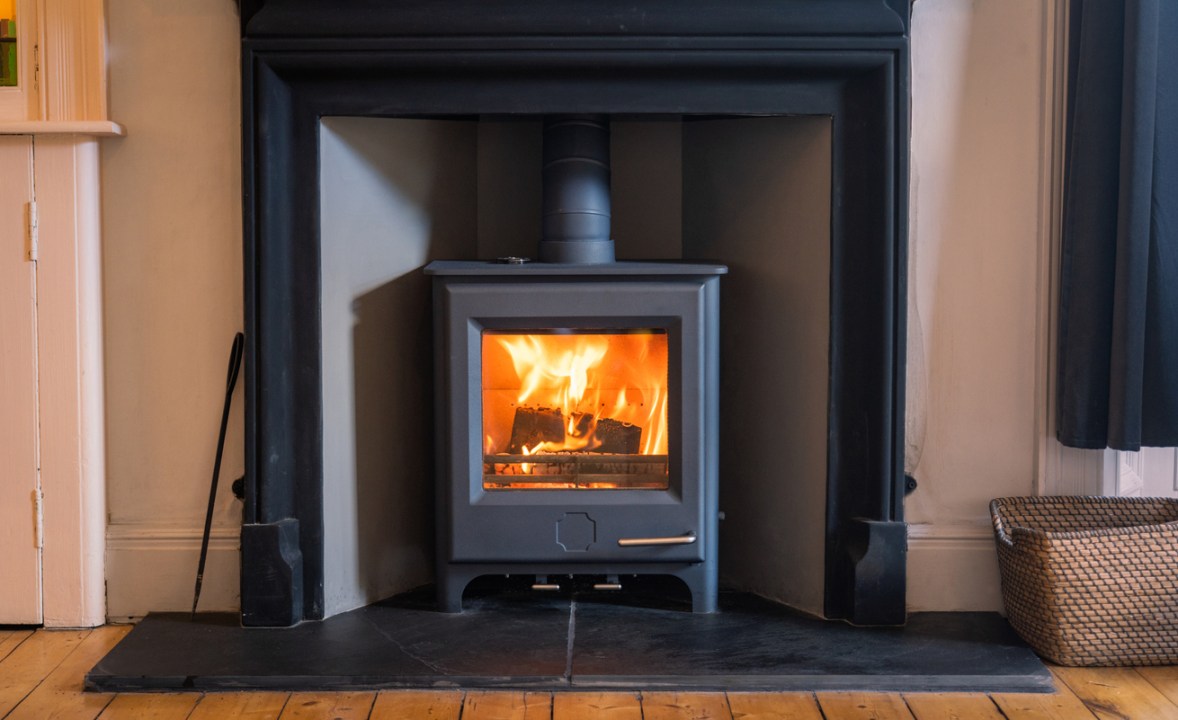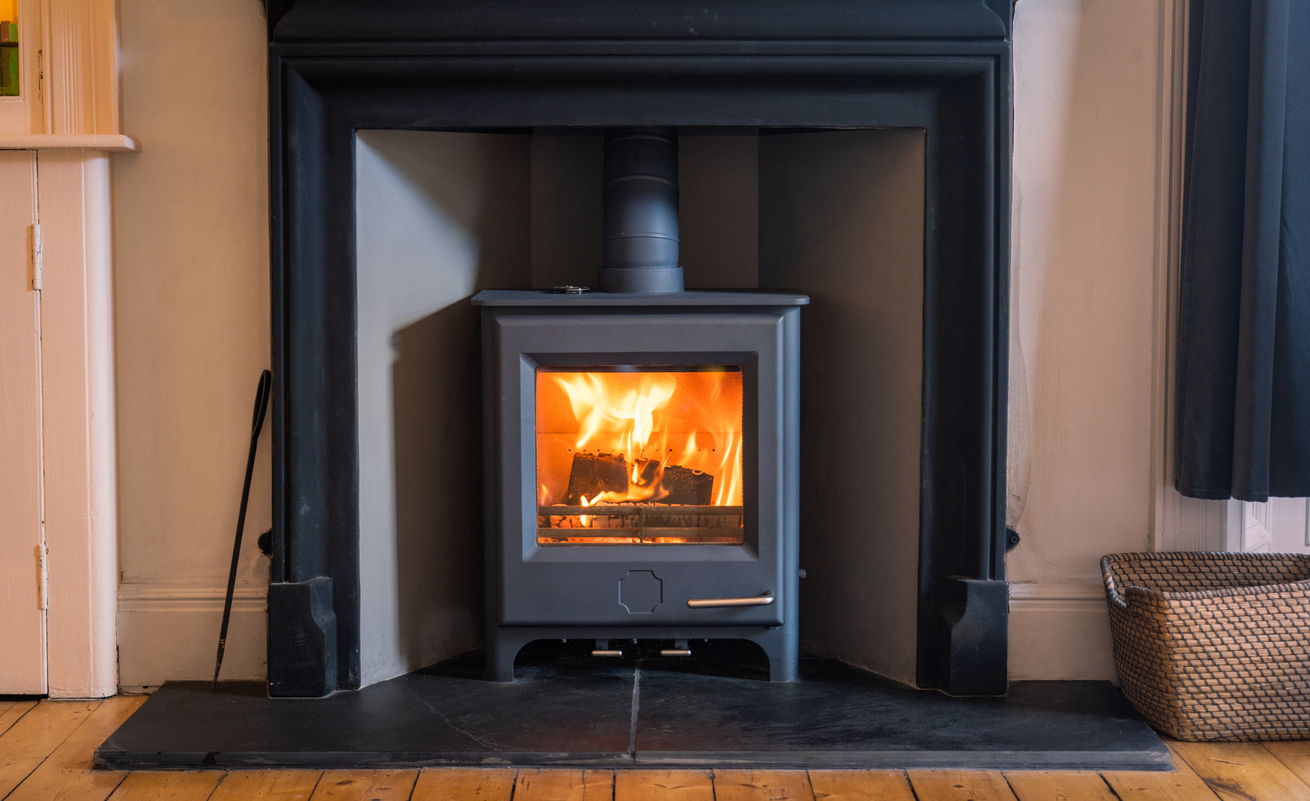Of all the money we’ve spent on our barn conversion since we moved in 13 years ago, the wood-burner we installed in our living room trumps bathrooms, oak flooring and even a beautiful garden room extension as our best investment. At £2,000, the neat cast-iron stove was worth every penny – and never more so than now, when the temperature is plummeting and our smart meter informs us that we’re blowing a zillion pounds a day on gas and electricity despite being frugal with the heating and, well, everything else.
Log-burners weren’t such a common sight when we got ours in 2012, but since then they’ve grown in popularity among those wanting to add a flick of English country chic to their homes. And as our energy bills have soared, they’ve become even hotter property. Between April and June this year sales rose by 40 per cent to reach more than 35,000, compared with 25,000 for the same period last year. Some retailers have reported as much as a 165 per cent increase in demand this autumn alone. Small wonder given that figures from the Office for National Statistics showed electricity and gas prices rose by 54 per cent and 99 per cent respectively in the 12 months to September.

Whisper it, but I do feel a little smug that we have aren’t shivering our way up a lengthy waiting list to have one installed. Our original reason for buying a wood-burner was practical rather than aesthetic: during the first winter in our barn we’d discovered it was impossible to heat the living room, with its vaulted, double-height ceiling, thanks to a substandard heating system that lacked the pipe width and power to pump warmth to the double-bank radiators in there. I won’t bore you with the details, but it turned out cheaper and less messy to have a wood-burner than to tackle the pipework.
Right from that foggy, cold November day when it was installed and I discovered the hard way that lighting it at 3 p.m. would not mean the room was warm by early evening (it’s a big space to heat), we’ve learned a lot of log-burner lessons. Here’s what you need to know if you decide to get one installed:
Do be alarmed
Although log-burners bring warmth (and joy), like any form of heating they can also bring dangers – the most serious being carbon monoxide (CO). As wood burns, it gives off soot and other gases, including CO. Most of these particles escape up the chimney, but some of them end up coating the inside of the flue. It’s essential that there is an open airway between the fire and the outdoors – an unobstructed chimney allows air to circulate freely and lets the heating appliance or wood-burner draw in oxygen to fuel combustion.
CO detectors are small, inexpensive and designed to sound a piercing alarm before the exposure to carbon monoxide would present a hazard to a healthy adult. As well as being an excellent idea, it’s also a building regulations requirement to fit a carbon monoxide alarm if you have installed a wood-burning or multi-fuel stove.
Do call your local chimney sweep
See above. If too much soot builds up inside the flue or chimney, this can prevent airflow and cause gases to back up. Schedule regular chimney- or flue-sweeping according to the needs of your appliance. Experts recommend doing this least once or ideally twice a year to maximise efficiency and ensure safety. A retired police inspector-turned-chimney sweep does ours for £60 a time – but it took me two years to realise this was necessary, at which point he told me that we were terrifyingly close to the debris within the chimney producing harmful levels of carbon monoxide. Thankfully, the alarm positioned a few feet above our log-burner is designed to go off before levels become dangerous.
Do purify your air
It’s been well-documented that wood-burning stoves can be bad for us and for the environment. As my husband and I both have allergies to the likes of pollen (him), animals (me), smoke and house dust (both of us), when we installed our wood-burner we spent another £800 on a medical-grade air purifier ranked as HEPA standard – high-efficiency particulate absorbing filter.
Forever haunted by a severe asthma attack as a child when my parents lit the open fire in a cottage we rented one half-term in the Yorkshire Dales, I knew we couldn’t be complacent just because our fire had a door on it. Even those seconds when you open and close it to add a log or more coal leads to smoke entering the room.
There was a delay of a few days between the stove being fitted and the air purifier arriving, during which we both sneezed, wheezed and wondered what the hell we’d done. But our air purifier does a spectacular job of negating all of that and leaves the room smelling clean and fresh. A study by scientists in British Columbia showed that using an air purifier in homes where a wood-burning stove was installed did reduce levels of harmful particles (known as PM2.5).
Don’t stack your logs either side of the stove
After dining in a particularly gorgeous country pub one winter I decided to go home and copy the way they’d stacked their logs around their log-burner, snug between its cast-iron sides and the brickwork of the fireplace. Though I nailed the same aesthetic effect, to my horror the logs soon started smoking with the heat – the same week I read in the news about a house fire caused by this very thing. Lesson learned: keep your logs at a distance, in a basket or similar.
Don’t spend money on cleaning the glass
Want to keep the glass window on your stove door clean? No pricey products required. Simply screw up a large sheet of newspaper and rub it in a circular motion over the inside of the glass (when the stove is cold!) and, hey presto, clear glass.
Do beware birds in the burner
When I popped into the living one room spring afternoon to retrieve a book, I was perplexed by a gentle thumping sound. There, flapping around inside the log-burner, was a blackbird which had fancied itself as Santa and come down the chimney. Thankfully the fire was cold and I had two plumbers working in the house at the time, one of whom rescued the bird and took it out to the garden.
Do burn only dry wood
Freshly felled timber can take up to 36 months to dry before being suitable for burning. We found this out the hard way when a friend dropped off some logs for us from a tree he’d chopped down in his garden. Only burn air-dried logs with the ‘Ready to burn’ logo, established to give consumers the confidence that they are purchasing logs that have a moisture content below 20 per cent. Thesee burn more efficiently and are better for both your home and the outside environment.
Do give yourself a lumberjack workout
Prepare for a regular workout when your log delivery arrives. The farmer we buy ours from tips them from his truck on to the drive and it takes me an hour to stack them all up. Our next delivery is due in a few days’ time, so I’ve forewarned my biceps, glutes and lower back to expect trouble.
I stack ours on to a wooden pallet in the garage otherwise the bottom row rots if it rains and water seeps under the doors. Another lesson we learned.
Oh, and wear gloves. Those splinters are pesky.
Do invest in a full fireplace guard
When our little one came along several years after the log-burner, one of the first things we did was get a guard that fits around the entire fireplace and is secured to the brickwork. Even though he’s now in primary school and understands the dangers of fire and stoves, he’s a typical rough-and-tumble little boy who will throw himself – or a ball – around in the living room in any parent-free window of opportunity. So the guard is still intact, as is our peace of mind that he can’t accidentally fall towards or touch the stove.
Do master the art of lighting the fire
Rather like making your own bread, there’s a knack to lighting a wood-burner. Through trial and error, we’ve perfected our method – a mixture of smokeless coal (the only kind that’s now legal), kindling and logs. We bring logs into the house from the garage for a few days to dry them out even more before we use them. Recently we also made a revelatory discovery in the form of logs wrapped in fire-lighting material which are widely available for as little as £1 each. They take away all the hassle of getting a fire to light, emit a lot more heat and burn for a couple of hours. We just use ours to get the fire going, then throw on normal logs thereafter.







Comments